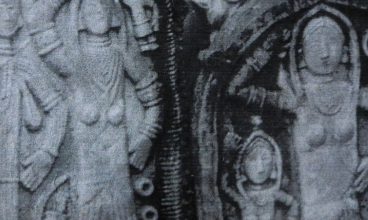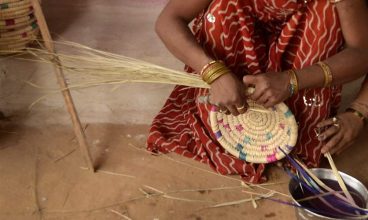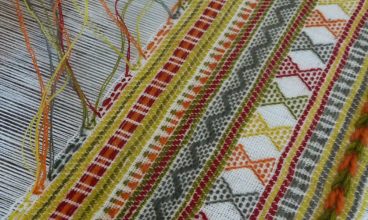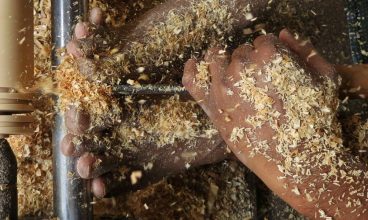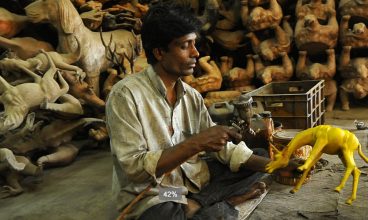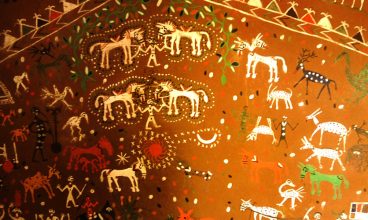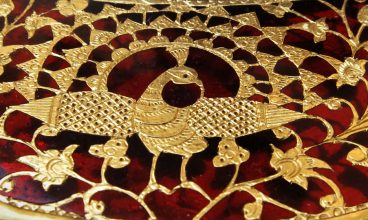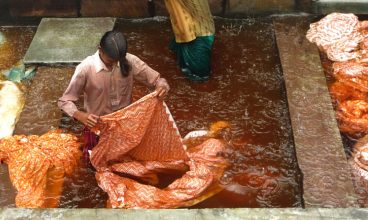Egyptians weren’t the only people to propose that death is but an extension of life. Memorial stone carving locally known as ‘Gatha’, ‘Gatla’, ‘Smriti Stambha’ or ‘Mandos’ is a popular practice amongst the tribes of Gujarat, Rajasthan and western Madhya Pradesh. These visual epitaphs are created when there is an unnatural or sudden death of […]
Read MoreThe craft of basket making is commonly known as ‘Tokri Bunna’ in India. Evolved to make containers for nomads to carry food and collectables, the craft is an ancient one, only after pottery. These baskets are made of grass and take new shapes every mile.
Read More‘Bhujodi’ weaving is a craft that takes its name from ‘Bhujodi’, a small village in ‘Kutch’ where this craft is practiced. This village of weavers is famous for its exquisitely woven traditional textiles of ‘Kutchi’ shawls, traditional blankets and stoles.
Read MoreMata Ni Pachedi is a handmade textile of Gujarat meant to be an offering in the temple shrines which house the Mother Goddess. The name is derived from the Gujarati words ‘Mata’ meaning ‘mother goddess’, ‘Ni’ meaning ‘belonging to’ and ‘Pachedi’ meaning ‘back’. The goddess forms the central figure in the design, flanked by other […]
Read MoreColour permeates every single activity in an Indian’s life, more so in our villages. Colour pervades not just the gorgeous clothes of the people but even the small, nondescript items of everyday use. Spoons and ladles, chakla -“ belan (board and rolling pin), toys, stools, danDiya sticks, everything is covered with patterns and merging strips […]
Read MoreThis art of creating life like animal statues from leather is practiced in Indore, Madhya Pradesh. Craftsmen and their families practice this craft to create miniature to life size versions of all types of animals, from horses, cows and elephants, to lions, tigers and rhinos of the jungle, to exotic creatures of the wild, like […]
Read MorePithora paintings are ritualistic paintings done by the Rathwa tribe. These paintings depict the main deity called Pithora and a procession displaying his accomplishments. When kept in homes, they are believed to bring peace, prosperity and happiness. These are also believed to be an old method of cartography.
Read MoreThewa is a 400 year old art of creating gold filigree on a coloured molten glass base. The patterns in this slender latticework of gold are inspired from nature and mythology. This inbred art is exclusively practiced only by the Sonis or goldsmiths of Nathulal Soni family.
Read MoreRogan painting, locally called Rogani Kam, is an intricate and skillful painting done on inexpensive textiles using a thick paste of castor oil and color. The technique with which it is done has lent a unique identity to this seemingly basic craft. The artwork becomes more beautiful with time and compliments the fabric texture. The […]
Read MoreThe prints from the villages, locally known as ‘gaam’ of India, are called as the ‘Gaamthi’ prints; vibrant colors, contrasting shades, varied patterns being their characteristic features. Originally done with natural dyes extracted from plants and other source, they are now also being done in artificial colors.
Read More

